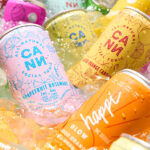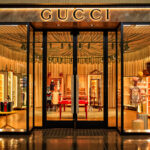
Legalization in any state invariably begins with a rush of brands launching products they believe will appeal to the coveted upscale shopper. But as markets mature, they become saturated with luxury merchandise that is affordable for only a small segment of the buying public: the elite and well-heeled or those who aspire to appear so. The majority of consumers are most comfortable in the moderate to low price range.
Enter the modern phenomenon of the “value brand,” offering quality products that may not be as fancy as or have the marketing budgets of their high-end kin, but also won’t put a crimp in consumers’ pocketbooks. Grocery and department stores may represent the most well-known value-priced venues. All the major chains shelve products bearing in-house labels right next to national names for easy comparison shopping. Walmart’s value-priced, in-house line is branded Great Value; Amazon’s is AmazonBasics. Both have devotees who say quality may not be quite as good as that offered by category leaders, but you can’t beat the price.
What makes low- to moderately priced brands a good value? Strategists have wrestled with how to clarify the concept for consumers, but the core issue is quite simple, according to Olivia Mannix, founder of marketing agency Cannabrand: “Consumers want to be able to purchase better-quality items without the designer price tag.”
Quality—that’s the key. Regardless the price tier, if a brand fails to deliver what it promises, the cost is moot. Recently, Mannix has seen a trend in startups entering the market with products priced less than what the competition charges for similar goods, but she worries quality may not meet expectations. “This is something value brands will need to address when competing with leading brands,” she said.
They’ll also need to invest in marketing—perhaps not to the extent luxury leaders do, but enough to gain name recognition and consumer interest.
Shoppers in all economic cohorts gravitate toward brands that share certain characteristics: quality, transparency, consistency, trust, and a brand story that resonates. In cannabis, companies must check all those boxes while maintaining compliance with strict regulations and onerous taxing schemes. And, because market size is finite in a state-by-state system, they must constantly be developing new ways to bring more customers into the fold.
The latter may be one area in which value brands have an advantage over high-end manufacturers: A significant source of potential new fans is those just coming of age. “Each year new members of Generation Z turn 21 and thus age into the cannabis marketplace, so the market is naturally expanding in size,” said Liz Connor, director of analytics at Headset. “Generation Z generally has less disposable income than other generations. With wallets tighter, value brands could be more attractive to this new group of consumers, and attracting this group of consumers when they first enter the market is a great way to build a relationship with your customer that can carry through all their life stages.”
According to Connor, value brands also have another, largely untapped, target market: consumers who trade on the black market because illicit goods are less expensive than licensed merchandise. Offering quality products at a reasonable price might help convince those shoppers safety is worth the slightly higher spend.
Old Pal’s founders developed their value brand on the belief that striking out from the pack creates enormous potential. Instead of chasing the women’s luxury market along with everyone else, the company, which sells flower and vapes, embraced a theory that the majority of consumers are price-sensitive.
“When the industry was moving toward overly polished, complicated product offerings, we did the opposite,” said Jason Osni, co-founder and president. “We created something simple and approachable—the first brand to focus exclusively on the value shelf while still taking some of the artistic elements many of the high-end brands were using in order to elevate the experience and create a community that consumers are compelled to be a part of.”
Osni and co-founder Rusty Wilenkin, who serves as Old Pal’s chief executive officer, set out to make their products accessible, inclusive, inspiring, and uniting. The team established a catchy slogan that encapsulates the company’s raison d’etre: Weed for the people. “We want to turn people on to new experiences, new communities, new ways of viewing the world that inherently connects us all,” said Chief Marketing Officer Allison Pankow. “Whether that is sharing our latest favorite munchie spot on the east side of [Los Angeles] via our journal or enhancing the vibrations of a backyard music showcase at a monthly series event with a toke or two, Old Pal is there for everyone.”
The brand introduces itself to consumers through packaging designed by an agency outside the usual cannabis suspects: Austin, Texas-based LAND. The agency concepted a folksy, everyman vibe similar to the image Pabst Blue Ribbon beer projects. Both vapes and flower come in old-school pouches with simple, western fonts. “It’s definitely a throwback,” Osni said “We are playing hard on the vintage, old-time feel, and we’re seeing a great reception.”
In January 2019, Old Pal launched a display campaign that included billboards and posters in New York, Los Angeles, and San Francisco. “That campaign introduced the entire country to our aesthetic and who we are as a company,” said Osni. “As cannabis becomes a national topic of conversation, Old Pal will help push the narrative of acceptance from coast to coast. This is just the beginning; we have so much more to share.”
However, it hasn’t been all smooth selling. Old Pal has had to deal with an overcrowded and overcomplicated market while also facing an evolving consumer base. What has kept the growth of the company steady is its unwavering focus on how the brand makes consumers feel, whether that is at the time of purchase or at a brand event. “The brand soul is infectious and genuine,” Osni said. “It sets us apart from all other brands in the space.”
For inspiration, Osni looked to Pabst Blue Ribbon and Japanese casual apparel company Uniqlo as exemplary value brands. “I follow Uniqlo for their focus on consistency and inclusivity of the brand, not the price point,” he said. “The Uniqlo experience, whether in an airport or a mall in Tokyo, is always consistent, which makes for a comfortable and familiar shopping experience. And through product offering and collaborations, they have something for everyone—the Marvel nerd or modern young professional. A wide array of fashion preferences is met through the offering.”
Old Pal’s price point of $15 for an eighth of an ounce of flower has helped create a vibrant Instagram community. The company’s page is full of comments like “we love your flower for the approachable THC levels.”
“Many luxury brands focus on high-end weed, which oftentimes means higher THC levels—levels the average consumer cannot handle,” said Osni. “But there is a huge segment of the market that is new to smoking flower who cannot manage these high-THC strains.
“We also hear from consumers of the Baby Boomer segment making their way back to smoking flower that our moderate THC levels are greatly appreciated,” he continued. “We’ve been referred to as ‘dad grass’ and, honestly, are happy to assume that term. We are here to provide people with a good time, a high that still allows for social, communal, and peaceful experiences. If that’s ‘dad grass,’ we’re about it.”
The approach apparently resonates. According to Pankow, sales have outperformed expectations. “We’ve built a reputation around our events and the brand at large,” she said. “Customers end up being our biggest advocates, spreading the word faster than any media buy will. We work tirelessly to be the most accessible product for anyone who is interested in the plant with approachable THC levels and economical price points—truly weed for the masses.”
Quarter, which makes vaporizers, also is a star in the value market. Like others in the space, the company pursues a plan of providing quality products at affordable prices. “We felt by presenting a favorable price point that Quarter would make it into the shopper’s exit bag, and then we’d earn their future business by how the product tasted and made them feel,” said Brand Director Eric Bava. At launch in 2019, the owners banked on their observation that many consumers wanted to experiment with multiple brands before splurging on a big buy.
Quarter set out to create an attractive product that could be mistaken for high-end merchandise. The company married the look with approachability and whimsy using bright, cheerful colors. “You need to get consumers’ attention immediately,” Bava said. “Quarter’s creative teams accomplished that with our brand presence on the shelves and through all our social outlets.”
After settling on hardware, extractions, messaging, and price point, the team turned to fine-tuning their public relations outreach. According to Bava, the PR team has pushed Quarter’s name “out there” in myriad publications not just locally, but also nationally. “The more you push to get the brand out there and recognized, the better chance you’ll have at gaining new consumers at the store level,” he said.
Quarter’s consumer reach is wide, from the day-sipper to the heavy ripper. The company’s favorable price point of $17.50 plus tax snags both first-time and experienced users, all of whom appreciate the overall discreteness as well as the potency. So far, according to Bava, the biggest challenge has been finding attractive shelf space. The sector is crowded, and there is only so much room. Following mainstream retail’s lead, many dispensaries have adopted a pay-to-play policy. Bava said Quarter’s chief competitors for space are Old Pal, Leune, and Gold Drop. “They all have the same price point and have similar offerings in terms of the [all-in-one] vaporizer,” he said.
When visiting with dispensary buyers, Bava said he often hears Quarter is the “best bang for the buck” due to its simple, attractive, and relatable brand messaging. “Once the end consumer tries the product, they are hooked,” he said. “Everybody just loves the simplicity of it. Sales have exceeded our expectations.”
The rise of value brands is driven, in large part, by the cannabis market’s unique way of expanding. Typically, states legalize medical programs with a certain degree of trepidation. Then, when legislators, authorities, and the general public are relieved to find the program hasn’t led to widespread addiction or crime, they open the gates to recreational use. The transition creates demand for new products that address a wholly different consumer psychographic. Whether medical or recreational, though, consumers who are new to cannabis often suffer “sticker shock.” Unsure whether weed is right for them, they tend to choose products based on price, not necessarily quality. Jared Mirsky, chief executive officer at branding agency Wick & Mortar, has observed the cycle repeatedly.
“While these cycles play out in every state differently, the patterns repeat,” he said. “I’m happy to report that new markets are moving smarter based on a keen understanding of these patterns.
“I make a lot of comparisons to Heinz and Hershey’s when I speak at various conferences, but we are really reaching that point in cannabis,” he added. “Get ready to see the flagships emerge. My partners and I are looking forward to launching great multistate value brands, and it is inspiring to have a larger playing field.”
Mirsky points to three essentials for creating a lasting value brand: positioning, affordability, and volume. “Make sure you are not trying to make something for everyone,” he advised. “Have your brand be meaningful to a larger segment group. This is where data is becoming a key component in the creation process. Equally as important, your brand concept needs to be translatable across multiple categories. Good branding, storytelling, and social impact are key marketing approaches for accomplishing that.”
Mirsky sees companies such as Select (“They are easily able to translate their brand to a lot of segments and categories.”), Northwest Cannabis Solutions (“I’m really impressed with established brands I see in the portfolio.”), and Tree-Rolls as value brands on the rise.
Gavin Antill, founder and creative director at creative agency Madison 8, has his eye on the value brand market for a very basic reason. He said the luxury market is taking a major hit and value is in vogue. “The majority of cannabis buyers are still millennials,” he said. “The cost of living is high for everyone but even more so for these younger buyers. So, obviously, affordability is the key.”
Antill adheres to the “the three Ps”: price, product, and perception. He believes word of mouth is the path to awareness and profitability. “The best marketers are always going to be people who try your product and love it,” he said. “You simply will need to harness that energy.”
The value brands he sees making the biggest impact include Gen!us, Sunderstorm’s Kanha, and Jeeter. Others have a shot at the top, he said, but they must be prepared for intense shelf-to-shelf combat.
“This is a critical time to be innovative and create a winning value brand,” Antill said. “Factoring in all costs, can your product be really good, super-consistent, and made to be at a value price point and still be profitable? Is there some value outside the costs, perhaps because it’s totally unique or clever or has some point of difference to make it special? This is where creativity can reap the rewards.”
Osni agreed, adding, “I would expect this trend to continue to grow and begin to reflect other consumer-goods markets. Nearly all consumer goods have brands serving value, mid-range, and luxury segments, and I don’t think cannabis will be any exception to that trend. In many consumer goods markets, we see major companies holding all three types of brands in their portfolios. I wouldn’t be surprised if we started to see more luxury brands offer a value-priced product in their product line in the future, mirroring trends like Old Navy, Gap, and Banana Republic, all under the same parent company.”











